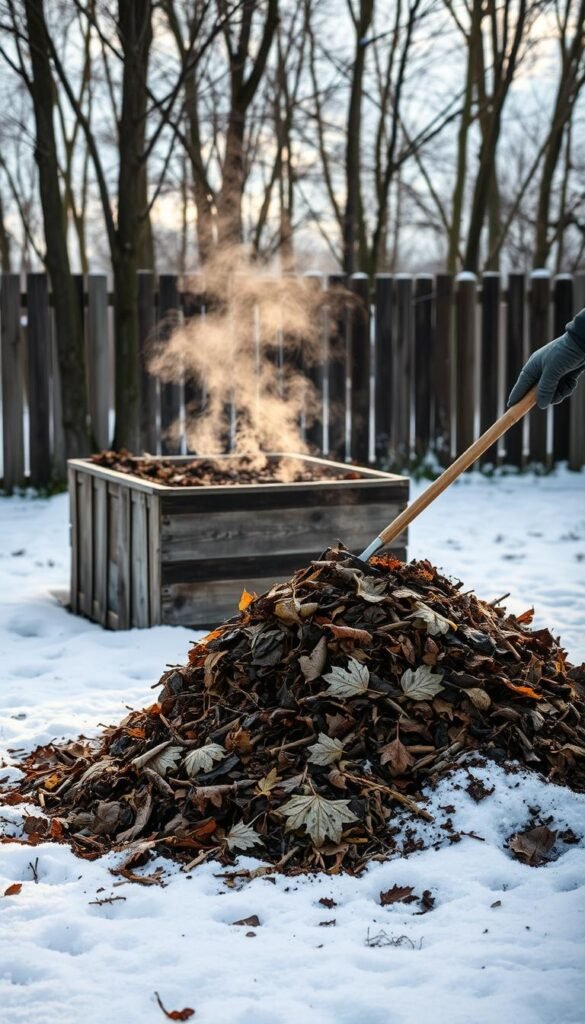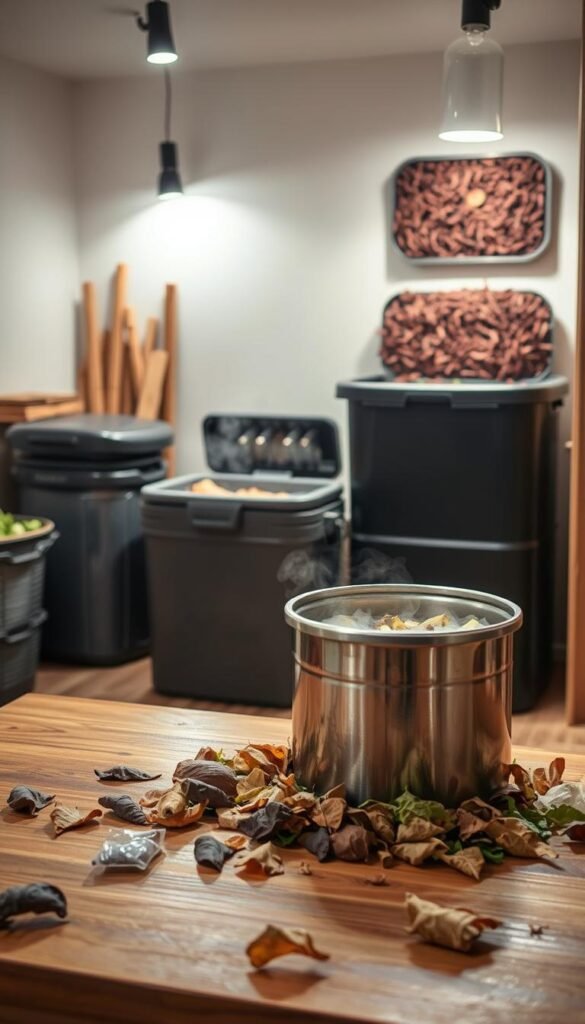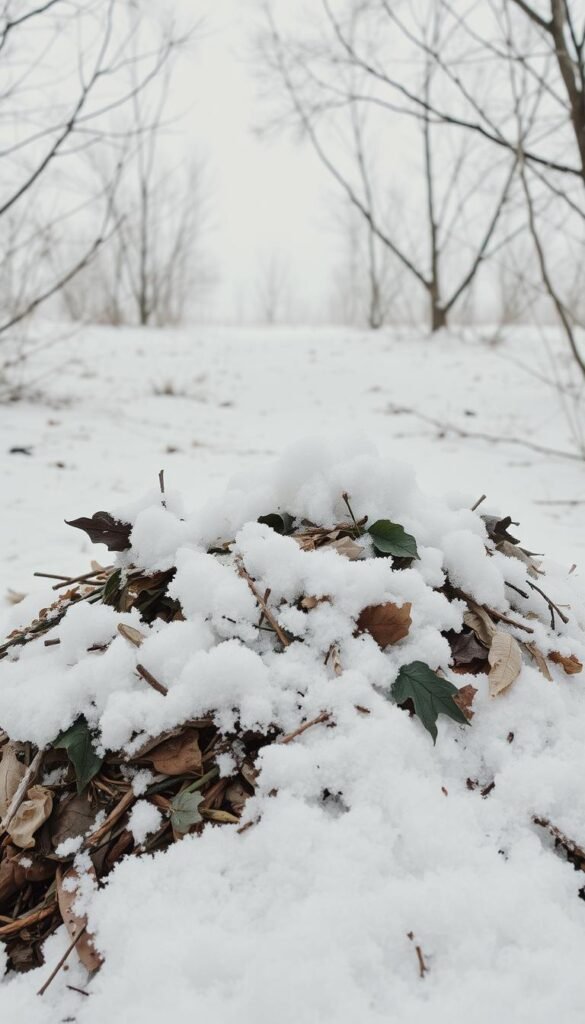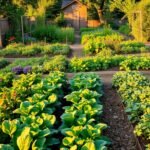Did you know your outdoor decomposition project doesn’t need to hibernate? Even when temperatures drop, active bacterial colonies adapt to chilly conditions. Research from Michigan State University Extension shows that properly managed piles generate heat through microbial activity – sometimes enough to melt surrounding snow!
Two types of microorganisms drive this process. Thermophilic bacteria thrive in warmer zones of the heap, while psychrophilic varieties work in cooler areas. This teamwork allows decomposition to continue year-round, though slower than in summer. Look for gentle steam rising from your heap – a natural byproduct of these busy organisms, not a fire risk.
Balancing green kitchen scraps with brown materials like dry leaves creates ideal conditions. The mix feeds microorganisms while allowing airflow. Well-structured heaps also retain moisture better, preventing freeze-dried stagnation.
Colorado gardening experts recommend using straw blankets or leaf layers as insulation. This simple step helps maintain temperatures that keep beneficial bacteria active. Your future garden will thank you for the nutrient-rich results come spring!
Understanding the Science Behind Winter Composting

Winter might slow us down, but your compost’s tiny workers stay on duty. Michigan State researchers found these microscopic decomposers evolve strategies to handle freezing conditions. The secret? A tag-team effort between two bacterial groups that thrive in different temperature zones.
How Microbes Adapt to Cold Temperatures
Psychrophilic bacteria are nature’s frost-resistant recyclers. These cold specialists produce antifreeze proteins, letting them break down materials even when thermometers dip below freezing. You’ll often find them working the outer edges of your heap where temperatures stay cool.
The Role of Thermophilic and Psychrophilic Bacteria
Thermophiles dominate the pile’s warm core, generating heat through rapid decomposition. As outer layers cool, psychrophiles take over. This dual-system approach means decomposition never fully stops – it just shifts gears. Steam rising from snow-dusted heaps? That’s visible proof of their round-the-clock activity.
Three factors keep this microbial dance going:
- Balanced meals: Mix nitrogen-rich food scraps with carbon-packed leaves
- Moisture control: Damp sponge consistency prevents freeze-dried stagnation
- Insulation tactics: Straw blankets or leaf layers trap precious warmth
By supporting these natural processes, you create a self-regulating ecosystem that weathers the cold. Your reward? Rich, crumbly humus ready for spring planting.
Preparing Your Compost Pile for Winter Success

Strategic setup makes all the difference when temperatures plummet. Focus on two key factors: smart placement and protective layers that maintain microbial activity. Let’s break down the essentials for cold-weather resilience.
Choosing the Right Location and Bin Design
Position your heap where it gets maximum sunlight – south-facing spots work best. Avoid low-lying areas where water pools, as excess moisture can freeze solid. University studies recommend wide, shallow containers over tall narrow bins. Why? They retain heat better and prevent the core from freezing.
Low-sided wooden crates or repurposed pallet structures allow easy turning. Some gardeners add removable foam panels to bin walls for extra insulation. Remember: airflow matters. Leave gaps between slats or drill ventilation holes to prevent anaerobic conditions.
Tips for Insulating and Moisture Management
Layer insulation like a winter coat for your pile. Start with 6-8 inches of straw or shredded leaves on top. For extreme cold, wrap the bin in foil-faced bubble wrap – it reflects heat inward. An old carpet makes a great insulating lid that’s easy to lift when adding kitchen scraps.
Pre-wet food waste before adding it to prevent moisture theft from the pile. Aim for a damp sponge feel – if squeeze-testing leaves your hand slightly wet, you’ve nailed it. During brief warm spells, turn the heap to redistribute heat and oxygen. A simple compost thermometer helps track progress; ideal temps stay between 90-140°F even in freezing weather.
Balance is crucial. Mix nitrogen-rich materials like coffee grounds with carbon sources – try shredded newspaper or sawdust. This combo feeds microbes while preventing soggy, frozen clumps. With these adjustments, your decomposition engine will hum through the coldest months.
How to Compost in Winter: Tips for Keeping Microbes Active

Your winter compost pile thrives on regular check-ins, much like a cozy ecosystem needing occasional tending. Start by monitoring the core temperature weekly – a simple meat thermometer works wonders. If readings dip below 90°F, fluff the mixture with a pitchfork to reintroduce oxygen. This gentle turning prevents compaction while distributing heat pockets.
Spotting wispy steam rising? Celebrate this visible proof of microbial activity! Contrary to fire concerns, this natural phenomenon signals thriving decomposition. For optimal performance:
- Layer fresh food scraps between carbon-rich materials like shredded newspaper
- Bury green waste 6-8 inches deep to deter frost and pests
- Maintain moisture levels resembling a wrung-out sponge
Insulated compost bins with 12-inch walls retain heat best during cold weather. Add extra protection using straw bales or burlap sacks around the structure. When adding kitchen scraps, chop them finely for faster breakdown. Pre-freeze peels and cores to create ready-to-use nutrient packets for your pile.
Worm enthusiasts should note: red wigglers survive freezing temps when given adequate insulation. Create a 10-inch leaf blanket in your vermicompost system, and they’ll keep processing organic waste all season. Remember – even brief midday thaws offer opportunities to aerate and hydrate your decomposing treasure. Consistent care ensures spring delivers rich, garden-ready humus!
Exploring Alternative Composting Methods During the Cold Months

When frost blankets your garden, innovative approaches keep organic recycling thriving. Indoor systems and specialized techniques offer year-round decomposition magic – no snow boots required!
Indoor Vermicomposting and Its Benefits
Red wiggler worms transform kitchen scraps into nutrient gold in compact bins. These hardworking invertebrates thrive in 55-77°F environments – perfect for basements or heated garages. Bury food waste beneath shredded newspaper bedding to prevent odors. Pro tip: Bury bins partially underground for natural insulation against cold weather.
Bokashi Composting and Cool Composting Explained
The Bokashi method ferments food waste using beneficial microbes. This anaerobic process handles meat and dairy – items traditional piles reject. After two weeks in an airtight bucket, bury the pre-compost to finish breaking down. It’s like pickling your scraps for later garden use!
Sheet composting simplifies cold-weather recycling. Layer materials directly onto frozen soil:
- Alternate food scraps with cardboard or straw
- Cover with burlap to deter pests
- Let winter’s freeze-thaw cycles jumpstart decomposition
Urban composters love using Mylar-lined containers or repurposed coolers for insulation. One Minnesota gardener reports success wrapping worm bins in old sweaters! Whether you choose wriggly helpers or microbial fermentation, these methods turn winter months into prime recycling time.
Wrapping Up Your Winter Composting Journey
Freezing temperatures don’t have to freeze your eco-friendly efforts. With smart strategies, your compost piles become winter warriors – transforming kitchen scraps and yard waste into black gold despite the chill. Remember, microbial teams work around the clock when you provide insulation, balanced materials, and consistent moisture.
Successful cold-weather composting hinges on preparation. Choose sunny spots for outdoor piles and insulate bins with straw or leaves. Indoor options like vermicomposting let worms handle food scraps without braving the elements. Both methods rely on maintaining that critical heat-generating balance between greens and browns.
Don’t let shorter days deter you. Monitor moisture levels like a sponge check-up artist. Turn compost during brief thaws to boost airflow. Every frozen carrot top you bury now becomes next spring’s plant superfood.
Ready to master this frosty frontier? Explore local extension office guides or connect with gardening communities online. Your persistence through snowy months will yield crumbly, nutrient-packed humus when warmth returns. The secret’s out – cold weather just met its match!





